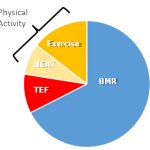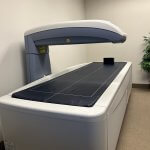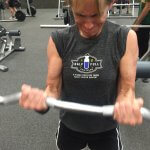Training with Moxy
A few weeks ago we added a new gadget to the list of data gathering devices, a Moxy Monitor (MM), which measures muscle oxygen saturation levels. This device is about the size of 1.5 packets of artificial sweetener and 0.82 inch thick. You place the MM on the center of the vastus lateralis, halfway between the greater trochanter and medial condyle. As the amount of oxygen in the hemoglobin changes, the color of the hemoglobin also changes. Using near-infrared light, the MM reads the color of the hemoglobin, translating this data into a percentage of muscle oxygenation, SmO2. I will leave anything more than this very basic explanation to the scientists, so visit the website to learn more.
We use PerfPro software to run all of our computrainer videos and the MM data can be transmitted real-time to this program and displayed with the other data such as Power Zones, Watts, heart rate (if I used a monitor) and so on. One of the statistics generated is Percentage of SmO2. Please keep in mind that I am an dismal scientist (i.e. economist) and the last time I had a biology class was in high school, so my impressions of the usefulness and any meaning of these numbers is based on cardiac knowledge rather than scientific theory (cardiac knowledge = what I know deep in my heart is true but have no proof).
- What type of warm-up would be most beneficial? I think I need a long warm-up before my legs are ready for hard efforts. The warm-up prior to racing is something that I tend to minimize for several reasons. Could these numbers prove my inner “you really should warm up on the trainer and stop socializing” voice correct?
- Do I notice a correlation between watts and %SmO2?
- Will the data from MM suggest that I should have skipped graduate school and pursued a professional cycling career (ignoring the fact that I did not ride a bike at that time in my life)?
Field Research:
Nasty weather and my outside temperature restrictions (below 40F?? on the computrainer!) relegated me to an indoor trainer. Luckily, we have a computrainer spin studio in the garage, with almost every Sufferfest video and many ErgVideos in our library. From tempo to VO2 max efforts, a video exists to create pain, suffering and a great deal of sweat. All data comes from these indoor rides, which lasted between 45 and 180 minutes.
The MM sits on the centerpoint of one of the quad muscles, with the elasticity of your bib shorts holding it in place since the neoprene strap which comes with the MM is too annoying to wear when cycling. With the shorter length of many women’s bib shorts, it is difficult to keep the MM in place. It moves toward the hip and toward the side of the leg when pedaling. Due to my preference for having skin, I ignored a suggestion from my training partners to use duct tape to secure it in place.
MM impressions:
- My legs need much longer than I normally give them to warm-up. During the week, my legs usually feel tired or dead when I first get on the bike. My %SmO2 for these workouts began in the 40-50% range, decline a bit and then started to increase after about 10 minutes. My rating of perceived exertion also fell, despite an increase in my actual exertion (measure by watts). Warming up for me is more important than I realized. I reflect back on a couple of races last summer when it was too hot to warm-up, so I did not and wondered why I really wanted to die for the first twenty minutes when others who also did a minimal warm-up seemed fine. The MM data shows the importance of increasing hemoglobin and oxygenation prior to the start of my races.
- Inverse relationship between watts and % SmO2 once warmed-up, as expected. Higher values of %SmO2 indicate more recovery and I noticed these numbers increasing during recovery between intervals.
- The value returned for %SmO2 strongly depends on the placement of the MM on the vastus lateralis. For example, I placed the MM on the center point (between the head of the femur and the medial condyle) of this muscle, on the estimated midway point. It moves. When it moves, the %SmO2 number changes. From my experience, it appears that moving the MM toward the hip increases the %SmO2 value and moving it toward the abductor decreases the value. The movement needed to generate these changes is small, about 3-4 mm.
- If higher %SmO2 values correlate to greater recovery, my legs recover quickly between intervals. This correlation indicates that my excuses of….”my legs were fried and I just needed to sit in” holds for a brief period of time but….indicates the needed ability to just “embrace the suck” so to speak.
Overall assessment:
Oh, sadly, my choice of graduate school over attempted employment within the pro peloton was probably the correct one.


 g, and becoming fit.
g, and becoming fit.





Hi Chuck,
Can you give us an idea of the magnitude of change you are seeing by moving the sensor up and down along the VL?
I've observed on myself about a 5% to 10% SmO2 change over about 5 inches of movement with the lower numbers coming closer to the knee.
Possibly a better suggestion than duct tape is to try 3M Vetrap #1410. It's available on Amazon here http://www.amazon.com/3M-Vetrap-Bandaging-Length-Width/dp/B0002YFS3I
The 4 inch wide black material works well. It's probably not opaque enough to block out direct sunlight like the Moxy strap does, but it does work well indoors. Some people like it better than the Moxy strap.
Thanks for sharing the information.
Roger